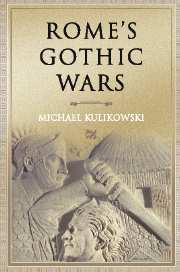
The Making of Late Antiquity
Peter Brown
135 pages including index
published in 1978
Peter Brown is the historian who popularised the idea of Late Antiquity as a transitional period between classic antiquity and the early Middle Ages, with the emphasis on the continuity between Rome and the Middle Ages, rather than on the collapse of the western Roman Empire. Brown first publicised his theories in The World of Late Antiquity; this isn’t that book, but was the closest to it I could get. The Making of Late Antiquity is based on a series of lectures Brown gave at Harvard University in 1976 and focuses on the transformation of Roman society between the second and fourth centuries CE.
A topic which is of course closely connected to the political and economic turmoil which the Roman Empire was subjected to in that period, with civil wars, “barbarian” invasions and a resurgent Persia, but you wouldn’t know it from this book. Brown concentrates on the inner lives of the Romans and ignores politics. This alone makes it an odd bedfellow with the other histories I’ve reading about this period, but Brown’s writing style makes it even odder. His writing is very oldfashioned, almost nineteenth century like, sometimes hard to come to grips with. The combination of inner focus and his writing style made this book fussy and a bit prissy, at least to me.
That Brown’s focus is on the mental rather than the political transformation of the Roman Empire made for a bit of a change, a different way of looking at Late Antiquity. Personally I find this too contrived to be useful, leaving out too much context and providing a much too rosy view of the late Roman Empire. Despite this I still finished The Making of Late Antiquity, since it was short enough to not waste too much time on.
There are two main arguments being pushed here. The first is the transformation of urban politics, as Roman society in these centuries became more hierarchical and more ambitious. Brown argues that in the second century ambition had been dampened by channeling it into local causes, e.g. through the sponsorship of religious festivals or by financing new buildings. Two centuries later these governors limiting ambition no longer worked; instead political ambition was aimed at the emperor. Political power was no longer to be found locally, but through the imperial bureaucracy and ultimately the favour of the emperor itself. Local elites became smaller and more connected to the centre.
At the same time, there was of course the transformation of the empire from being pagan to a Christian one. This again could be seen as a change in ambition. Religion in the second century was much more of a private affair than it would be in the fourth. The numinous was widespread in both centuries, but in the second it was more capricious, the gods could strike anybody and there were no reliable connections to the supernatural. Even those who called themselves sorcerers were relatively modest in their claims, never claiming universality. By the fourth century this had changed, through the Christian tradition of saints as well as the establishment of bishops and the church hierarchy. This much more controlled channel towards God mirrored the way in which society as a whole became more hierarchical.
Peter Brown’s focus is on the how, not the why of these changes. There’s not much discussion of the root causes for how Roman society evolved in these centuries. In this you can perhaps see the origin of this book in a series of lectures, as a good discussion of these root causes would be difficult to do justice in that format. Their lack in the book made it less than satisfying to me, left out too much context.



